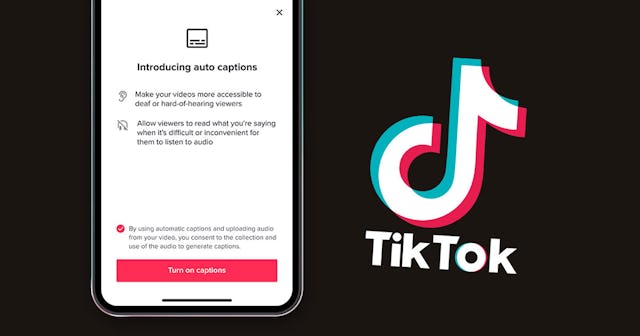TikTok Launches Auto Captions Making App More Accessible To Deaf Community

Auto captions will make content on the TikTok website and app more accessible for many users
If there’s an app that owned quarantine, it’s TikTok, the short-video platform that’s been the source of just about every video to go viral in the last year and a half. And now, your favorite TikTokers will be more accessible to all kinds of audiences — the app just announced that it’s rolling out a new auto caption feature.
“Inclusivity is important because when people feel included, they’re more comfortable expressing themselves and engaging with their community,” Stephanie Hind, TikTok’s Creator Management and Operations Manager, said in a press release. “We’re committed to fostering an inclusive app environment, and that means building products and tools that support our diverse community.”
TikTok
Auto captions will automatically generate captions for videos that have sound or voices, allowing users to choose whether they want to read or listen to content. As creators make their videos, they can select auto captions in the editing page, which will result in their videos being automatically transcribed and having text captions on the screen. Creators can edit the captions, in case the automatic tool doesn’t get them just right.
Viewers will now see a caption button on their TikTok screen, which allows them to toggle captions for videos on and off.
According to TikTok, auto captions are only available in English and Japanese for now, but the company is working to get support for additional languages in the coming months. The site also said it’s working to spread the word about auto captions to its top creators and encouraging them to use them, making the entire site more accessible to users who are deaf or hard of hearing.
TikTok
As popular apps strive to create more inclusive platforms, auto captions have been popping up all over the internet, from YouTube to Instagram stories.
And this announcement follows other updates that TikTok has made to make its platform more inclusive, like photosensitivity features that allow users with epilepsy to skip potentially harmful content, creator warning for creators who make photosensitive content, a text-to-speech feature, and animated thumbnails that are easier to see.
“Our goal at TikTok is to be accessible to all people, and we’re committed to doing the work long-term,” Hind said. “As we advance this work, we’ll continue to share news and updates with our community in an effort to be transparent and share the progress made. TikTok is a place for everyone and we’re working hard to better serve everyone in our community.”
This article was originally published on